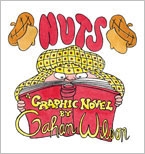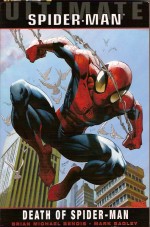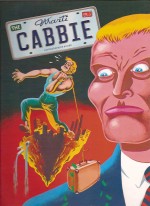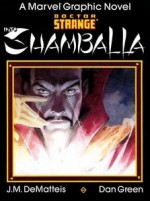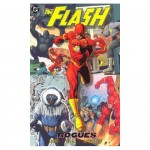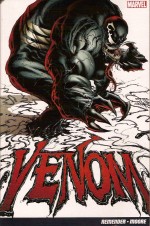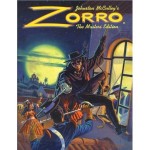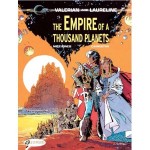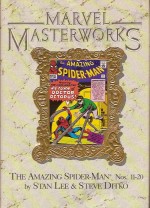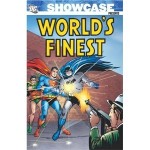
By Edmond Hamilton, Bill Finger, Curt Swan, Dick Sprang & various (DC Comics)
ISBN: 978-1-4012-1697-9
Some things were just meant to be: Bacon & Eggs, Rhubarb & Custard, Chalk & Cheese…
For many years Superman and Batman worked together as the “World’s Finest†team. They were friends as well as colleagues and the pairing made sound financial sense since DC’s top heroes (in effect the company’s only costumed stars) could cross-pollinate and, more importantly, cross-sell their combined readerships.
This most inevitable of Paladin Pairings first occurred on the Superman radio show in the early 1940s, whilst in comics the pair had only briefly met whilst on a Justice Society of America adventure in All-Star Comics #36 (August-September 1947) – and perhaps even there they missed each other in the gaudy hubbub…
Of course they had shared the covers on World’s Finest Comics from the outset, but never crossed paths inside; sticking firmly to their specified solo adventures within. So for us pictorial continuity buffs, the climactic first time was in the pages of Superman’s own bi-monthly comic (issue #76, May/June 1952).
Science fiction author Edmond Hamilton was tasked with revealing how Man of Steel and Caped Crusader first met – and accidentally discovered each other’s identities – whilst sharing a cabin on an over-booked cruise liner. Although an average crime-stopper yarn, it was the start of a phenomenon. The art for ‘The Mightiest Team in the World’ was by the superb Curt Swan and inkers John Fischetti & Stan Kaye with that keynote caper the opening inclusion in this first magnificent monochrome compendium (which thereafter re-presents their first 41 collaborations from World’s Finest Comics #71-111).
With dwindling page counts, rising costs but a proven readership and years of co-starring but never mingling, World’s Finest Comics #71 (July-August 1954) presented the Man of Tomorrow and the Gotham Gangbuster in the first of their official shared cases as the Caped Crusader became ‘Batman – Double For Superman!’ (by scripter Alvin Schwartz with Swan & Kaye providing the pictures) as the merely mortal hero traded identities to preserve his comrade’s alter ego and latterly, his life…
‘Fort Crime!’ (Schwartz, Swan & Kaye) saw them unite to crush a highly organised mob with a seemingly impregnable hideout, after which Hamilton returned to script ‘Superman and Batman, Swamis Inc’, a clever sting-operation that almost went tragically awry before an alien invader prompted an insane rivalry which resulted in ‘The Contest of Heroes’ by Bill Finger, Swan & Kaye, from World’s Finest #74.
The same creative team produced ‘Superman and Robin!’ wherein a disabled Batman could only fret and fume as his erstwhile assistant seemingly dumped him for a better man, whereas ‘When Gotham City Challenged Metropolis’ (Hamilton, Swan & Charles Paris) saw the champions at odds as their hometowns over-aggressively vied for a multi-million dollar electronics convention before a landmark tale by Hamilton, Swan & Kaye invented a new sub-genre when a mad scientist’s accident temporarily removed the Caped Kryptonian’s powers and created ‘The Super-Batman!’ in WF #77.
Arguably Batman’s greatest artist joined the creative crew ‘When Superman’s Identity is Exposed!’ (by Hamilton, Dick Sprang & Kaye) as a mysterious source kept revealing the Man of Steel’s greatest secret, only to be revealed as a well-intentioned disinformation stunt, whereas the accent was on high adventure when the trio became ‘The Three Musicians of Bagdad’ – a stunning time-travel romp from Hamilton, Sprang & Kaye.
When the Gotham Gazette faced closure days before a spectacular crime-expose, Clark Kent and Lois Lane joined dilettante Bruce Wayne as pinch-hitting reporters on ‘The Super-Newspaper of Gotham City’ (Hamilton, Sprang & Charles Paris) after which ‘The True History of Superman and Batman’ (Hamilton, Sprang & Kaye, #81) saw a future historian blackmail the heroes into restaging their greatest exploits so his erroneous treatise on them would be accurate…
Hamilton also produced a magnificent and classy costumed drama when ‘The Three Super-Musketeers!’ visited 17th century France to solve the mystery of the Man in the Iron Mask whilst Bill Finger wrote a brilliant and delightful caper-without-a-crime in ‘The Case of the Mother Goose Mystery! before Hamilton provided insight on a much earlier meeting of the World’s Finest Team with ‘The Super-Mystery of Metropolis!’ in #84, all for Sprang & Kaye to enticingly illustrate.
Hamilton, Swan, Sprang & Kaye demonstrated how a comely Ruritanian Princess inadvertently turned the level-headed heroes into ‘The Super-Rivals’ (or did she?), before a monolithic charity-event ‘The Super-Show of Gotham City’ (Hamilton, Sprang & Kaye) was almost turned into a mammoth pay-day for unscrupulous con-men whilst ‘The Reversed Heroes’ (Finger, Sprang & Ray Burnley) once again saw the costumed champions swap roles when Batman and Robin gained powers thanks to Kryptonian pep-pills found by criminal Elton Craig, just as Superman’s powers faded…
World’s Finest #87 presented ‘Superman and Batman’s Greatest Foes!’ (Hamilton, Sprang, Kaye) and found “reformed†villains Lex Luthor and the Joker ostensibly setting up in the commercial robot business – which nobody really believed – after which seminal sequel ‘The Club of Heroes’ by Hamilton, Sprang & Kaye, reprised a meeting of Batmen from many nations (Detective Comics #215, January 1955 or Batman: the Black Casebook and a key plank of Grant Morrison’s epic Batman: the Black Glove serial) but added the intriguing sub-plot of an amnesiac Superman and a brand-new costumed champion…
That evergreen power-swap plot was revisited in #90’s ‘The Super-Batwoman’ (Hamilton, Sprang & Kaye) when the headstrong heroine defied Batman by restarting her costumed career and was quickly compelled to swallow Elton Craig’s last Krypton pill to prevent criminals getting it, after which the stirring time-busting saga of ‘The Three Super-Sleepers’ (Hamilton, Sprang & Kaye) saw our heroes fall into a trap which caused them to slumber for 1000 years and awaken in a fantastic world they could never escape…
But of course they could and once back where they belonged ‘The Boy From Outer Space!’ by Hamilton, Sprang & Kaye detailed how a super-powered amnesiac lad crashed to Earth and briefly became Superman’s sidekick Skyboy, whilst ‘The Boss of Superman and Batman’ (author unknown, Sprang & Kaye) revealed how a brain-amplifying machine turned Robin into a super-genius more than qualified to lead the trio in their battle against insidious rogue scientist Victor Danning.
When the Man of Tomorrow replaced the Caped Crusader with a new partner it led to a review of ‘The Origin of the Superman-Batman Team’ by Hamilton, Sprang & Kaye after which Dave Wood, Sprang & Ray Burnley pitted the now equally multi-powered and alien-entranced champions against each other in ‘The Battle of the Super-Heroes’ from WF #95.
A magical succession of magnificent and whacky classics began in #96 with Hamilton’s ‘The Super-Foes From Planet X’ as indolent and effete aliens dispatched fantastic monsters to battle the titanic trio for the best possible reasons, before Bill Finger took over scripting and turned the Man of Steel on his greatest friends in ‘The Day Superman Betrayed Batman’ after which ‘The Menace of the Moonman!’ pitted the heroes against a deranged hyper-powered astronaut, ‘Batman’s Super-Spending Spree!’ baffled all his close friends and Luthor then trapped Superman in the newly recovered Bottle City of Kandor and became ‘The Dictator of Krypton City’ – all astounding epics beautifully limned by Sprang & Kaye.
Sprang inked himself in the rocket-paced super-crime thriller ‘The Menace of the Atom-Master’ whilst it took Swan, Burnley, Sprang & Paris to properly unveil the titanic tragedy of ‘The Caveman from Krypton’ in #102.
‘The Secret of the Sorcerer’s Treasure’ (art by Sprang & Paris) found two treasure hunters driven mad by the tempting power unearthed magical artefacts and Luthor quickly regretted used a hostage Batwoman to facilitate ‘The Plot to Destroy Superman’ whereas the metamorphosis which turned Clark Kent into ‘The Alien Superman’ proved not at all what it seemed.
‘The Duplicate Man’ in WF #106 had developed an almost unbeatable crime tool – whereas ‘The Secret of the Time-Creature’ spanned centuries and produced one of Finger’s very best detective thrillers to baffle but never stump the Terrific Team.
Jerry Coleman took over scripting with ‘The Star Creatures’, (art by Sprang & Paris), the tale of an extraterrestrial moviemaker whose deadly props were stolen by Earth crooks, whilst ‘The Bewitched Batman’ drawn by Swan & Kaye, was a tense race to save the Gotham Guardian from an ancient curse and ‘The Alien who Doomed Robin’ (Sprang & Sheldon Moldoff) saw a symbiotic link between monster marauder and Boy Wonder leave the senior heroes apparently helpless… at least for a little while…
This inaugural black and white chronicle concludes with ‘Superman’s Secret Kingdom’ by Finger, Sprang & Moldoff from World’s Finest #111 (August 1960): a compelling lost world yarn wherein a cataclysmic holocaust deprives the Man of Steel of his memory and Batman and Robin have to find and cure him at all costs…
These are gloriously clever yet uncomplicated tales whose dazzling style has returned to inform if not dictate the form for much of DC’s modern television animation – especially the fabulous Batman: the Brave and the Bold series – and the contents of this tome are a veritable feast of witty, charming thrillers packing as much punch and wonder now as they always have.
© 1952, 1954, 1955, 1956, 1957, 1958, 1959, 1960, 2007 DC Comics. All Rights Reserved.
